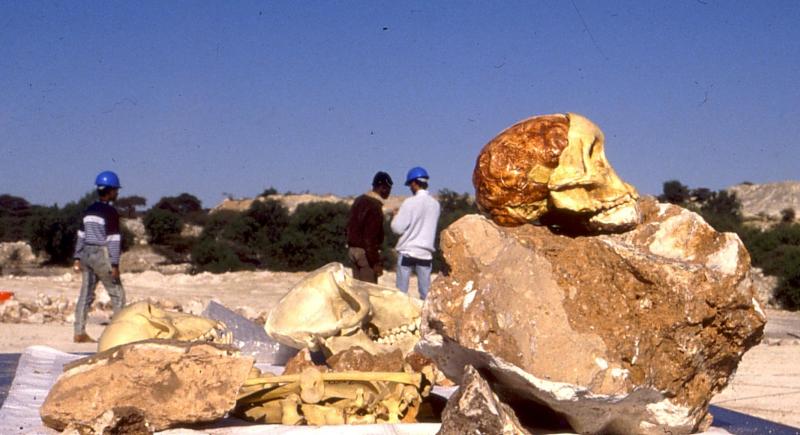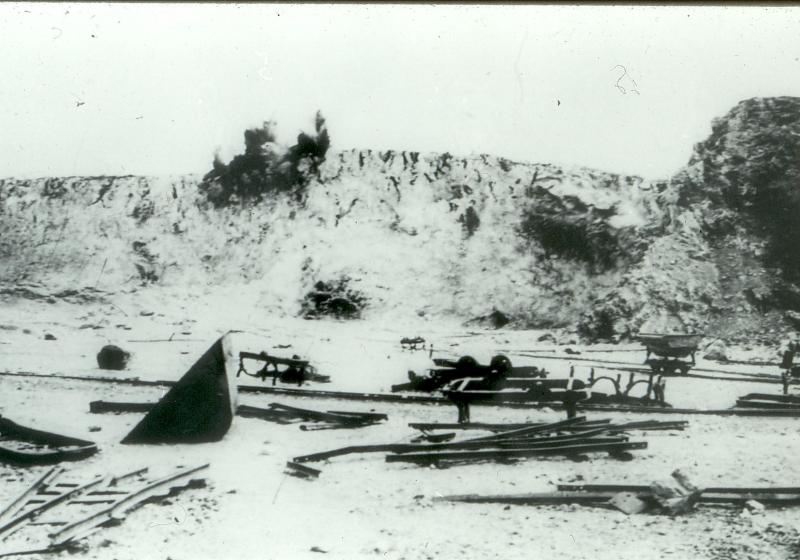New Findings from the Place Where the Taung Child was Found

by Jeff Grabmeier, Office of Media Relations, The Ohio State University.
When Jeffrey McKee looks back on his career so far, one highlight tops them all. He was able to spend seven field seasons digging and sifting through fossils at one of the most famous archeological sites in the world.

“This is the discovery that pointed to Africa as the place of human origin,” said McKee, a professor of anthropology at Ohio State. “That’s why it is so important. It was a key event in archaeology. Researchers were looking in Asia and Europe for human ancestors. The Taung child pointed them to Africa as the place where it all began.”
McKee said he read a lot about the Taung child and other significant fossils of our evolutionary ancestors while he was growing up. It was his “youthful dream” to be able to do his own research on fossils in Africa. That dream came true when he led research and excavations at the Buxton Limeworks site from 1986 to 1993.
Of course, the ultimate dream was to discover more hominin fossils, like the Taung child.
“Despite my many years of efforts, I never found a single fossil of our hominin ancestors,” McKee said. “But I did find lots of other cool fossils of extinct baboons and other mammalian creatures.”
At this point, every important fossil on the site has probably been found because of the destruction caused by early quarry activity, he said. Still, there are a lot of fossils to process from the area where he spent his field seasons. “There are hundreds and hundreds of fossils still in solid rock that we have to carefully extract.”

While the study of the fossils discovered at the limeworks continues, McKee recently completed another project that may help shape the direction that future studies take. In a recent issue of the Journal of Vertebrate Paleontology, McKee and a colleague published a detailed report of the geological and environmental context of the whole area surrounding where the Taung child was found.
“The context of where a fossil is found is a key to truly understanding it. If you don’t know the age of the site and information about what led to the creation of the fossils, you don’t know how the fossils found there fit into the evolutionary sequence,” McKee said. “Our description will help guide scientists for many years to come as they study the fossils that were found there.”
The Buxton Limeworks is a huge area that spans a lot of time, he said. There are 17 distinct fossil sites, and each is limited to a particular time period. But with so many different sites, scientists have the opportunity to study long-term sequences of evolutionary change.
“It used to be that everyone assumed all these sites were together, from the same time period. We found that this assumption was certainly not true,” he said.
McKee said his research suggests that the area where he excavated fossils, called the Hrdlicka pinnacle, is about 2.5 million years old. That area is filled with fossils. But the Dart deposits, where the Taung child was found, had many fewer preserved fossils and is about 300,000 years older. “We couldn’t have found a contemporary of the Taung child where we were digging. It was a very different time period and the way fossils were buried was very different,” he said.
Most of the fossils McKee and his colleagues found were of extinct baboons, and are interesting in their own right, he said. “One of the things we have found is that their brain size was much smaller than those of modern baboons,” he said. “Just as humans evolved larger brains over time, so did baboons.”
McKee said his recent research describing and examining the differences between the various fossil sites at the Buxton Limeworks shows the importance of continuing to study even well-explored archeological sites. New knowledge can overturn old assumptions.
“As scientists, we must constantly question old models and develop better ones.”
